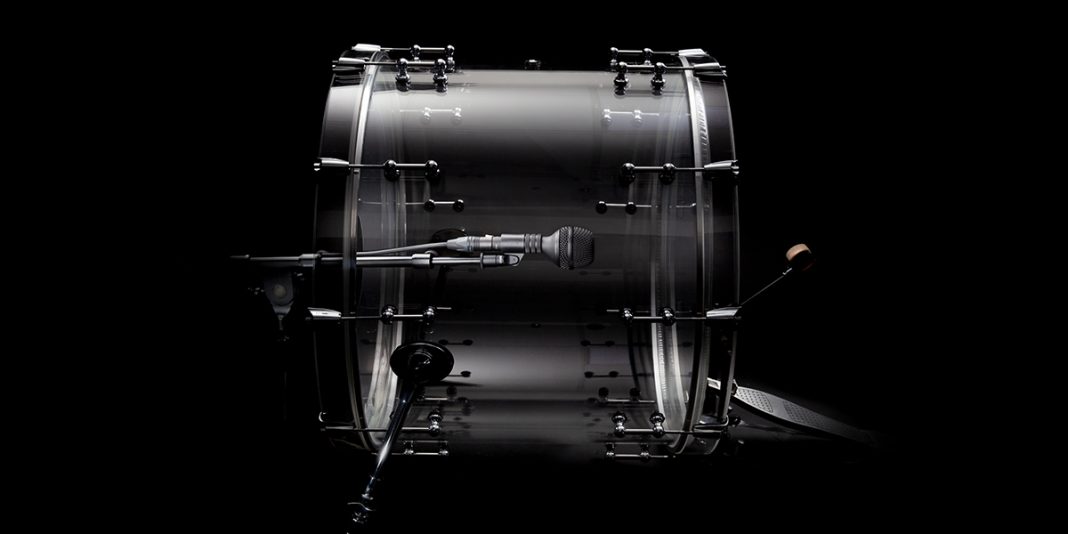What was the idea behind the creation of the 4055 Kick Drum Microphone?
“The ambition with this product was to create the best solution possible for this application, where the kick drum would sound exactly like the drum the artist has chosen, independently of the played genre. Acoustically, we decided to challenge the industry standard and deliver the absolutely flat frequency response, both on- and off axis, and this has generated a lot of excitement among the sound engineers.
“With 4055, they have the freedom to be creative instead of spending effort on fighting against the given characteristics of a microphone. From a design point of view, we have introduced an asymmetric design of the microphone body, which allows the user to effortlessly place the microphone both inside and outside of the kick drum, even if it has a small hole. The design addresses both the perceived need of a larger microphone as well as the extra wind damping needed to ensure the best sound from the kick drum.”
Can 4055 be used for other applications?
“The microphone can also be used on other instruments as it exhibits the same qualities as all DPA directional mics with flat on-axis and very controlled linear off-axis response. We have tested the 4055 with excellent results on the electric guitar amp cabinet, electric bass amp cabinet and horns. We have even used it as a podcast mic, though in this situation it should be fitted with an external windscreen to protect against the plosives from our voices. The 4055 has been longer under way than we would have liked, as the development process has been challenged by the COVID-19 pandemic, with travel restrictions and delays in the supply chain.
“End-users will be amazed to hear the real sound of their kick drum on the recordings. The end-users often spend a lot of effort on choosing just the right instrument that sounds exactly right for them, and with 4055 it is now possible to convey this sound to the listeners.”
What were the main challenges you had to contend with during the creation of this versatile microphone?
“One of the biggest tasks was to keep the renowned flat DPA off-axis response of the microphone while maintaining the high SPL handling with low distortion. The physical design including the weight and the balance was not a challenge, but it was an area of focus. We spent time on fine-tuning the mechanics, as we wanted to delight the user not only with the sound, but also with a design that performs seamlessly and securely during live performances. We have already received a number of very positive reviews, where people mention in general a great-sounding mic, the punchy and round sound, minimal cutting, no low-end feedback.”
This article originally appeared in issue #270 of TPi, which you can read here.






